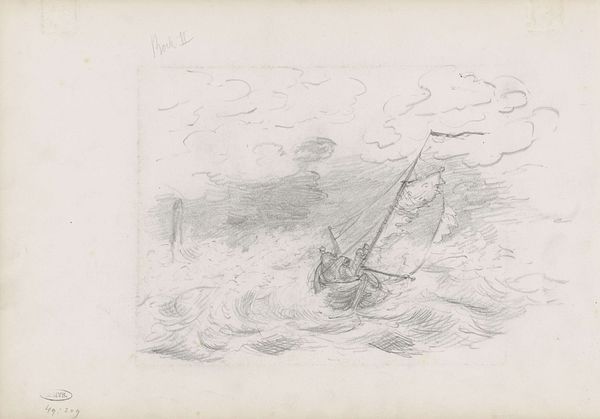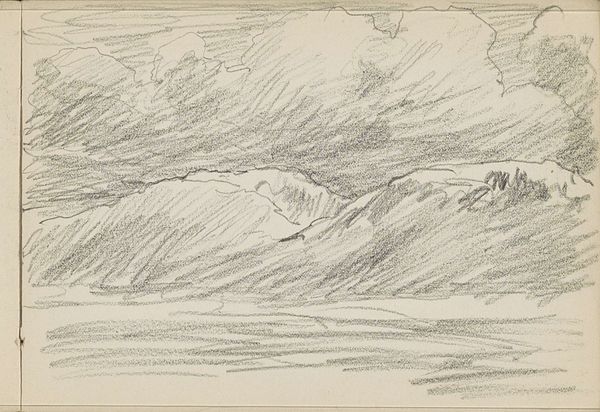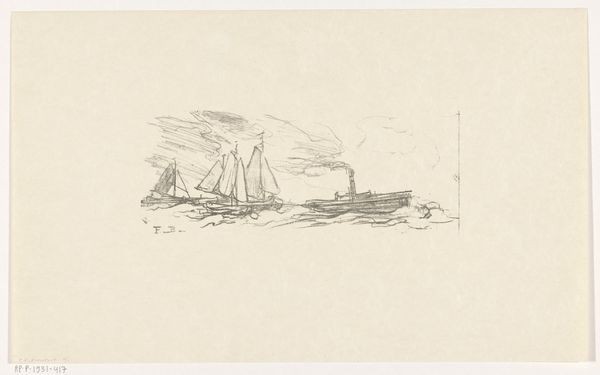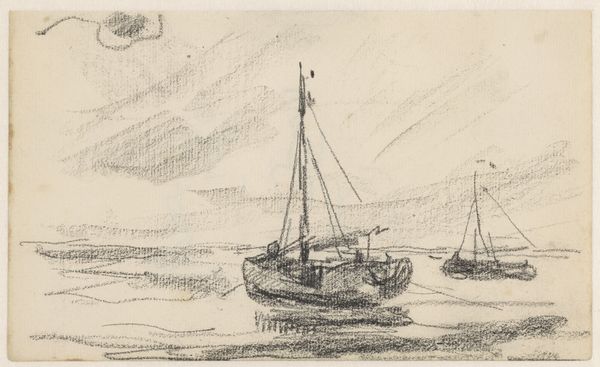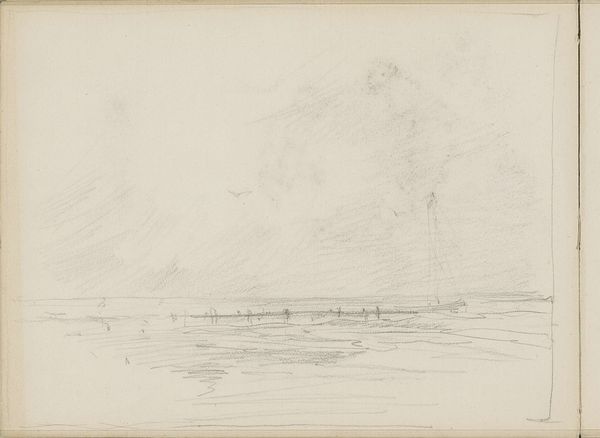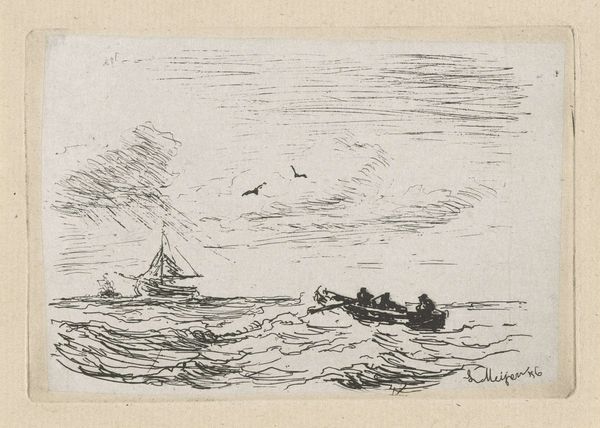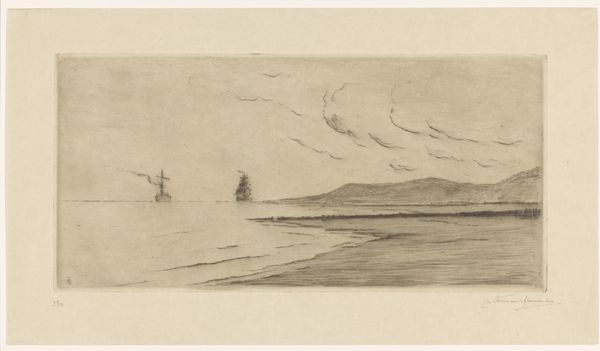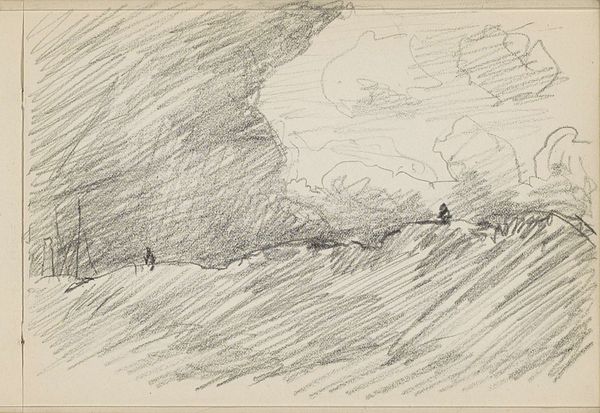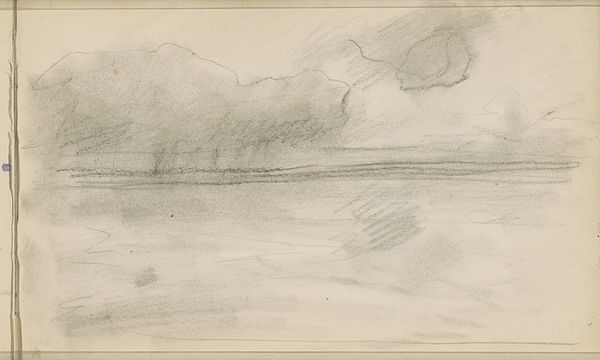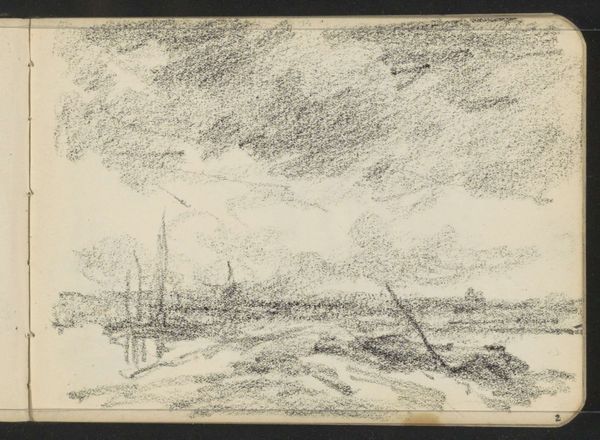
drawing, pencil, graphite
#
drawing
#
pencil sketch
#
landscape
#
etching
#
pencil
#
graphite
#
realism
Copyright: Rijks Museum: Open Domain
Editor: This graphite drawing, titled "Duinlandschap," or "Dune Landscape," is possibly from 1908 and created by Alexander Shilling. It strikes me as stark, almost desolate, given the limited tonal range and visible pencil strokes. What formal qualities do you see as most significant? Curator: The overriding structural element is certainly the directional hatching. Observe how the parallel strokes delineate the forms: horizontally for the water, diagonally for the dunes, and with more chaotic energy in the sky. The texture, created by the layering of these strokes, becomes a key component of the composition. Editor: I see what you mean about the directional hatching creating texture. Does the realism designation accurately describe this work, given its sketch-like nature? Curator: "Realism" here should be understood within the context of depicting recognizable subject matter. The work’s representational strategy hinges on suggestion rather than explicit detail, as lines stand in for mass. The artist doesn’t attempt to deceive the eye into believing that it’s witnessing an actual landscape; instead, the emphasis is on the artistic process itself, laying bare the fundamental elements of line, tone, and texture. The atmospheric effect created despite the medium's limitations, becomes the most compelling visual component. Editor: That's a great way to put it. I didn’t consider how the sketchiness could be a focal point in itself. Curator: Precisely. By prioritizing the act of creation over mimetic accuracy, Shilling directs our attention to the inherent qualities of the medium and the artist’s hand. Editor: So, paying attention to those formal qualities, the strokes and textures, helps us understand what the artist is really trying to communicate? Curator: Indeed. The apparent simplicity masks a sophisticated understanding of how form can convey meaning, even in a seemingly understated landscape. Editor: Thank you. Now I'm eager to consider what those textures and tonal variations evoke in other works of the period. Curator: As am I.
Comments
No comments
Be the first to comment and join the conversation on the ultimate creative platform.


